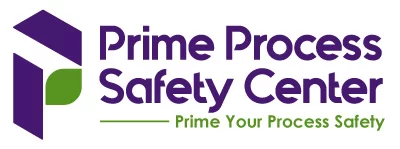
Electrostatic hazard training is an essential aspect of process safety education, addressing the risks associated with static electricity in various industrial operations. This type of training is particularly crucial in environments where flammable and combustible materials are handled, such as in chemical, pharmaceutical, petrochemical, and food processing industries. Electrostatic hazards can arise from several sources, including the flow of liquids, powders, and gases, or the movement of materials and personnel. These hazards can lead to unexpected ignitions and serious accidents, including fires and explosions.
The training typically covers the fundamentals of static electricity, its generation and accumulation, and the principles of safe grounding and bonding. It also emphasizes the importance of proper equipment design, maintenance, and operational procedures to prevent static build-up. By educating employees on identifying and controlling electrostatic hazards, the training aims to foster a culture of safety awareness and compliance with industry standards and regulations.
Moreover, electrostatic hazard training in the process industry often includes a comprehensive overview of relevant case studies and historical incidents, offering practical insights into the real-world implications of electrostatic risks. This approach helps in illustrating the critical nature of static control measures and the consequences of neglecting them. The training is tailored to various roles within the industry, from frontline operators to engineers and safety consultants, ensuring that all personnel are equipped with the knowledge and skills necessary to recognize and mitigate electrostatic hazards effectively. In addition to theoretical knowledge, the training often incorporates hands-on demonstrations and workshops, providing practical experience in implementing static control measures. By investing in thorough and regular electrostatic hazard training, companies in the process industry not only safeguard their operations and workforce but also demonstrate their commitment to maintaining high safety standards, which is essential for operational excellence and regulatory compliance.
Our electrostatic hazard training in the process industry encompasses the following key content areas:
- Basics of Electrostatics: Understanding the fundamental principles of static electricity, including how it is generated and accumulated.
- Identification of Electrostatic Hazards: Recognizing situations where static electricity can pose risks, especially in handling flammable materials, powders, gases, and solvents.
- Sources of Electrostatic Charges: Identifying common sources such as fluid flow, material handling, and friction.
- Risk Assessment: Evaluating the potential for electrostatic discharges in various operations and understanding the factors that increase risk.
- Safe Grounding and Bonding Practices: Instruction on proper techniques and procedures for grounding and bonding equipment to prevent static build-up.
- Equipment and Design Considerations: Overview of electrostatic-safe equipment design, including material selection and construction.
- Operational Procedures for Static Control: Implementing safe work practices to minimize static hazards, including but not limited to proper cleaning, maintenance, and operation techniques.
- Personal Protective Equipment (PPE): Guidance on the use of antistatic clothing, footwear, and other personal protective gear.
- Regulatory Standards and Compliance: Understanding relevant industry standards, regulations, and guidelines related to electrostatic hazards.
- Training and Awareness for Employees: Ensuring all personnel, from operators to management, are aware of electrostatic hazards and their roles in preventing incidents.
- Continuous Monitoring and Improvement: Emphasizing the need for ongoing assessment and updating of electrostatic safety measures in response to changes in processes or technologies.
This comprehensive training content ensures that employees in the process industry are well-equipped to recognize, evaluate, and effectively manage electrostatic hazards, thereby enhancing overall safety and operational reliability.
Why get Trained by Prime Process Safety Center
Enrolling in our “Electrostatic Hazard” training is essential for professionals in the process industry seeking to mitigate the risks associated with electrostatic discharges. Electrostatic hazards, often overlooked, can lead to significant safety incidents, including fires and explosions. Our training offers a deep dive into the science behind electrostatic phenomena, illustrating how and why these hazards occur in various process environments. We provide practical, industry-relevant insights on how to effectively identify, evaluate, and control electrostatic risks. Our expert instructors, experienced in the latest safety practices and regulatory requirements, will equip you with the tools and knowledge to implement robust electrostatic safety protocols in your operations. This training is not only a commitment to compliance but a proactive step towards ensuring the safety of your workforce and the integrity of your facilities.

